Circular connectors evolve to meet rugged portability requirements
Electronic systems are rapidly expanding into new military and space applications that often require smaller connectors that have higher density. Changes in the electronic equipment prompt the development of connectors and cabling to fit and perform in new environments and packages.
The need for small size and low weight have always been important for aircraft and spacecraft. Those requirements are now becoming more important as earthbound military users require more portability. Connectors are critical elements in systems that must be rugged enough to survive unique environments as diverse as personal watercraft, drones, and helmet cameras.
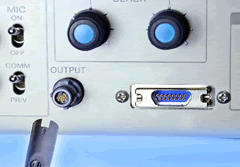
Nano Circular at 25 mil. Pitch
To support portable equipment, connectors must be smaller in size and diameter. Increasingly, these connectors mate with round cables that carry signals and power. Circular connectors are a natural shape for many panel interface connections because they take less front panel space than rectangular connectors and can support rapid plug and unplug connections for fast and easy instrument mating. They are often available in a number of mate and lock formats to serve various needs.
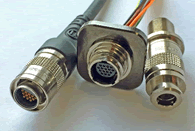 Systems being used in extreme environments also expand the challenge for circular connector design. For example, space qualified connectors must often be shielded from electromagnetic interference and avoid polymer outgassing as well as being extremely lightweight. Military applications require improved plating materials such as nickel plated aluminum, or the newer nickel/Teflon overcoating to help resist corrosion. Shock and vibration resistance is essential to maintain signal integrity simultaneously with signal speed increasing and voltage swings decreasing.
Systems being used in extreme environments also expand the challenge for circular connector design. For example, space qualified connectors must often be shielded from electromagnetic interference and avoid polymer outgassing as well as being extremely lightweight. Military applications require improved plating materials such as nickel plated aluminum, or the newer nickel/Teflon overcoating to help resist corrosion. Shock and vibration resistance is essential to maintain signal integrity simultaneously with signal speed increasing and voltage swings decreasing.
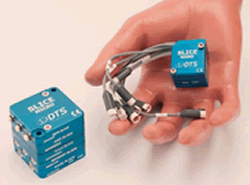
Photo courtesy of DTS Data Acquisition Systems
To meet today’s demand for small diameter connectors, many manufacturers are scaling down older designs. One way to observe changes in connector size is to note the pin sizes and current carrying capacity. For example, the popular Mil-DTL-38999 Circular connector uses 18-20 size pins to carry up to 12 Amps on 20 AWG wiring.
This year, a smaller 38999 connector is being standardized by a number of companies working with the Defense Logistics Agency (DLA).This down-sized mil spec version will be a smaller, more universally available circular connector with a triple-start thread coupling system. It will also mate quickly and have EMI shielding.
This new standard will likely use size 23 pins and handle about 10 Amps on 20-22 AWG wire. Companies already offer micro-circular connectors with size 24 pin/sockets that support 3 Amps on 24-30 AWG wire. Some of the smallest circular connectors use size 30 pins, support 1 Amp and 30-32 AWG wiring. Pin–to-pin spacing drops from over 75 mils to 25 mils. This reduces the diameter of both the connector and the cable. Cable flexibility improves simultaneously.
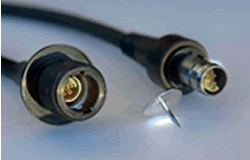
Gigabit Speeds with Power
In addition to physical changes, systems and circular connectors are going through an electronic renaissance. Many new circuits are using solid state chips that operate on significantly lower voltage and current levels and now run at digital gigabit speeds. High speed surveillance, and image displays demand this technology, similar to the consumer industry demanding faster TVs, computers, gaming devices, etc.
Consider a satellite taking photos as it orbits earth at 7,000 miles per hour. Each photo takes a minimum of 30 megapixels for one frame. The camera runs at 30 to 60 frames per second. The download of the images then end up using more than 7 gigabits/second. A connector and cable must support that signal speed and quality from the camera to its storage or transmission module. Note also that the request is that the connector and cable must be light weight and rugged as well as withstand constant temperature changes as it passes from sunlight to the cold darkness of space.
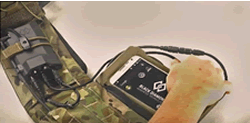
Black Diamond Advanced Technology’s Soldier Mixed Signal systems
These connectors now include power within the same cable to reduce size and weight. The new connector designations are still evolving, but seem to be settling at SWaP-R or SWaP-C, acronyms for speed, weight, power, and either cost or reliability. SWaP connectors are used in diverse applications such as radios and computer systems on the soldier’s uniform.
There are at least two key trends. The first is size reduction and standardization. Creating a standard allows for multiple connector suppliers to participate and for customers to select models that best fit their design needs.
The other change is the expanding use of modeling as developers strive to meet changing demand for efficiency in the design of products that are lightweight and fit in small, unique spaces. Often, customers want a group of mixed signal plus power connectors and cable systems. Cable companies and connector companies are beginning to work together to meet this need. With use of solid modeling and direct communication between customers and suppliers, it’s easier to achieve both fast turn-around and good performance.
Cables are often pre-tested for eye diagram performance at the high digital speeds and leading connector suppliers offer high speed wiring protocol and data to support the changes. Connectors are indeed getting smaller and more complex as our electronic appetite pushes connectivity systems to satisfy those needs.
[hr]
Bob Stanton is Director of Technology at Omnetics Connector Corp.
Recently posted:
[related_posts limit=”10″]








